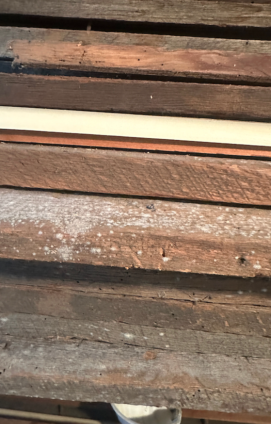WHAT TO LOOK FOR
What To Look For
When looking for mold in your home or any indoor environment, it's important to be thorough and systematic. Mold can thrive in various places, and early detection is crucial for effective remediation. Click here to see key things to look for when searching for mold!
01
Visible Mold Growth:
Look for any visible signs of mold on walls, ceilings, floors, and other surfaces. Mold can appear in various colors, including black, green, brown, white, or yellow.
02
Musty Odor:
Mold often produces a distinct musty or earthy smell. If you notice an unusual odor, investigate the source to determine if mold is present.
03
Water Leaks or Moisture Issues:
Mold requires moisture to grow. Check for any signs of water leaks, water stains, or areas with high humidity. Common sources include leaky roofs, plumbing leaks, and damp basements.
04
Condensation:
Check windows, pipes, and other surfaces for condensation, as it can create a conducive environment for mold growth. Addressing ventilation and humidity levels can help prevent condensation.
05
Discoloration on Surfaces:
Mold may not always appear as a distinct growth but can manifest as discoloration or staining on surfaces. Pay attention to any changes in color or texture on walls, ceilings, and other materials.
06
Hidden Areas:
Mold can grow in hidden or less visible areas such as behind wallpaper, inside wall cavities, under carpets, and within air ducts. Inspect these areas carefully.
07
Peeling Paint or Wallpaper:
Moisture behind walls can cause paint or wallpaper to peel. Examine peeling areas for signs of mold growth.
08
Deterioration of Materials:
Mold can cause materials to break down or deteriorate. Inspect materials like wood, drywall, and insulation for any signs of damage.
09
Allergic Reactions:
If occupants of the space experience unexplained allergic reactions, respiratory issues, or other health problems, it could be a sign of mold. However, health symptoms alone may not confirm the presence of mold.
10
Previous Flooding or Water Damage:
If the space has experienced flooding or significant water damage in the past, it increases the likelihood of mold growth. Thoroughly inspect areas that were affected.





